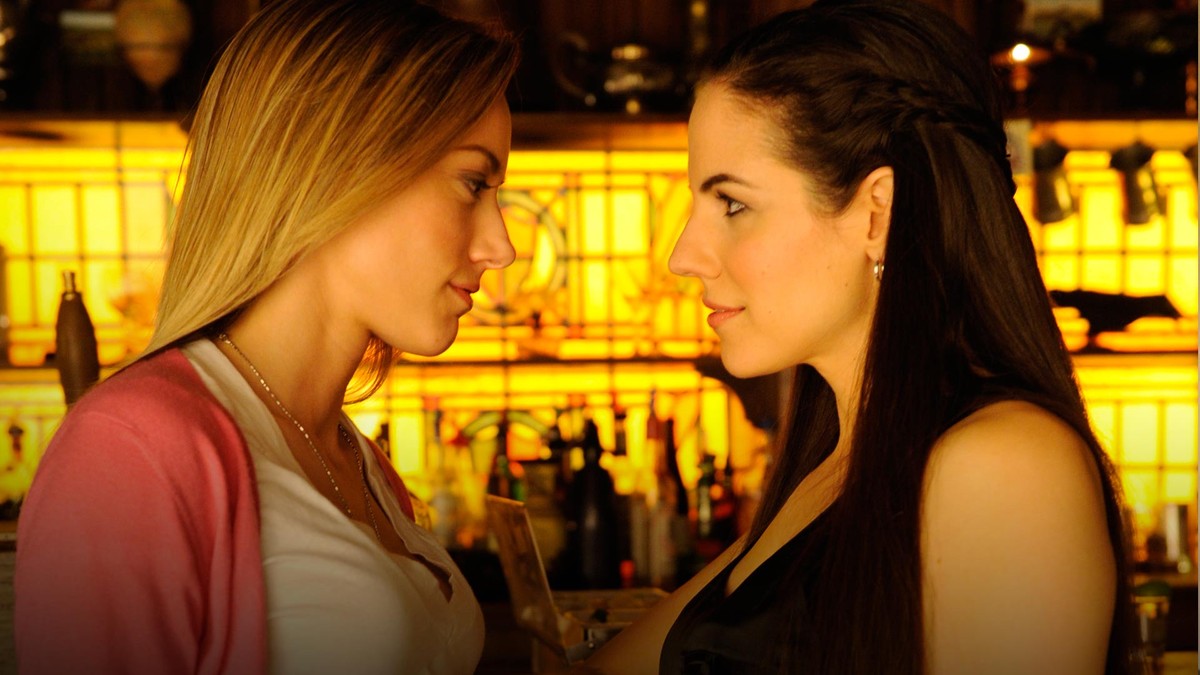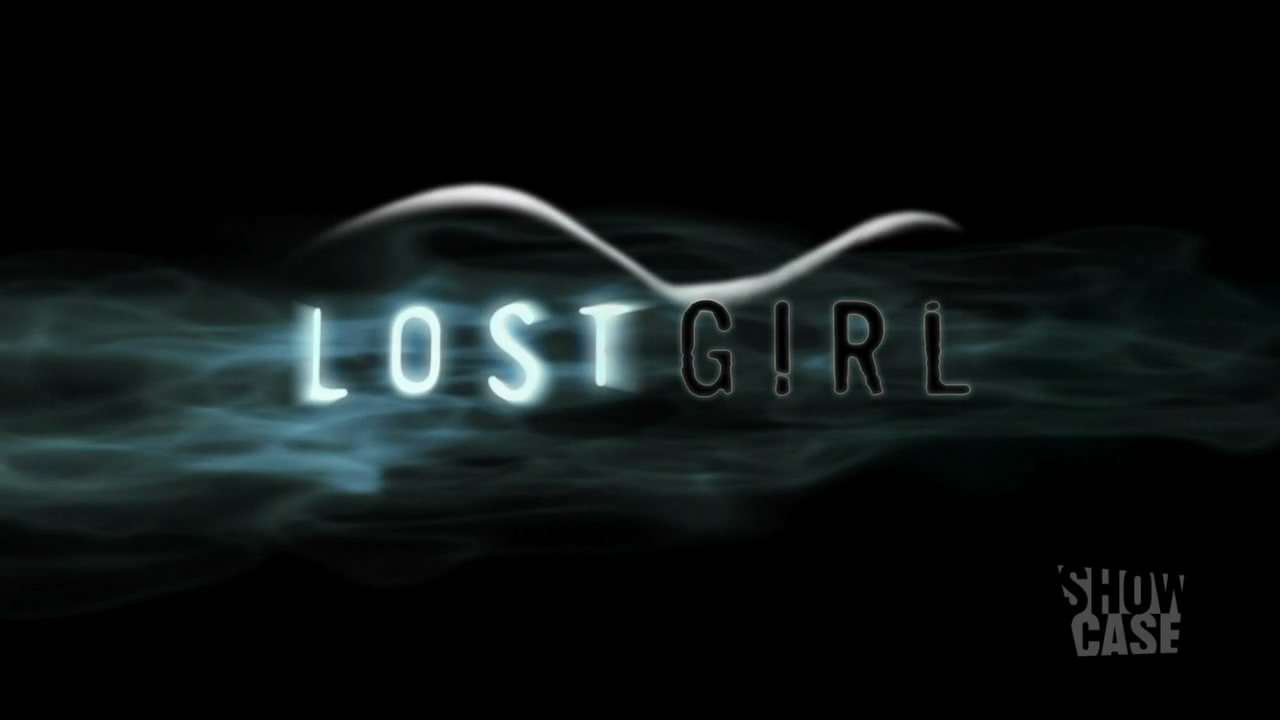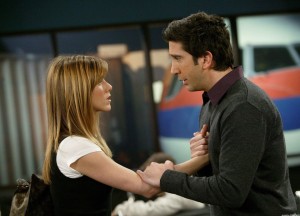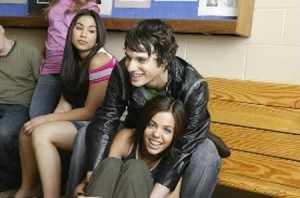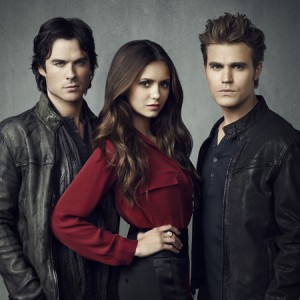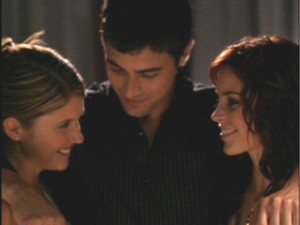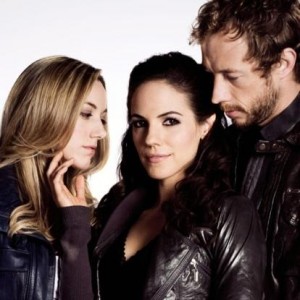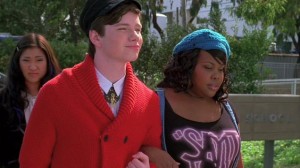This guest post written by Laura LaVertu appears as part of our theme week on Bisexual Representation.
The Canadian fantasy television series, Lost Girl, had a complex and intimate relationship with bisexual representation. Like most shows, years of development had to occur before it appeared on television. During this time, there was a deliberate attempt to counter negative perceptions of bisexual characters in its writing. It also had a rather fraught path to the small screen, one that producer Jay Firestone laid squarely at the feet of its “bisexual element.” He described how he first thought of the idea, in a 2012 Comic-Con interview:
“A couple of my friends and I were talking about what sort of Buffy would be like today versus when Buffy was out. And I made a joke at one point and said Buffy would be bisexual, and everyone said what a cool idea! So we started developing it from there.”
But the production team had a hard time finding a workable script. Series creator and season one’s co-showrunner, Michelle Lovretta, eventually landed it for them, structuring the idea of a bisexual female superhero around being a succubus: “a mythological being who uses sex to feed, heal, and kill” — a traditionally vilified female role that used sex as a weapon. Both Lovretta and Firestone expressed the difficulties they had in managing a television series around Bo (Anna Silk), such a sexually powerful, bisexual lead character:
“I went and sold it, tried to sell it, to everybody… and they were all scared of it a bit… They were nervous about the bisexual element,” Firestone said. “That’s what scared everybody.”
Lovretta relates her own anxiety about the show in this Watercooler Journal interview:
“But after that initial excitement came trepidation – it is so, so incredibly easy with a template like that to create something mind-numbingly insulting, anti-female, and exploitative. I wouldn’t want my name on that. And, as someone who respects both the straight and queer communities, I was afraid of alienating either of them in the process… or, of just making neutered, boring TV by overthinking it and being too PC. Gah!! The challenge was to create a fun, sex-positive world that celebrates provocative cheesecake for everyone, without falling into base stereotypes or misogynistic (or misandristic) exploitation along the way.”
She set up a series of rules in her writers’ room to address the problems:
- “Sexual orientation is not discussed, and never an issue;
- “No slut shaming – Bo is allowed to have sex outside of relationships
- “Bo’s male and female partners are equally viable;
- “Bo is capable of monogamy, when desired;
- “Both genders are to be (adoringly!) objectified — equal opportunity eye candy FTW.”
Lovretta admitted they could not always adhere to all of the rules in the “thick of production,” but they always “tried.” She was not fond of anything “too prurient;” and although she said she wrote with no specific themes in mind, she had a desire to “defend the bisexual community” against what she perceived as negative stereotypes. For this reason, the character of Kenzi (Ksenia Solo) was allowed to state she was straight in the first episode. This was to “represent female friendships that [were] not sexualized,” as well as to counter the “gay panic cliché that bisexual people sexualize everyone.”
This was rare and sympathetic handling for such a character. Awareness of the unique challenges of bisexual representation allowed Bo to be a genuinely complex heroine, instead of just a problematic stereotype. She was carefully crafted to be sex positive, while being defined by her relationships, instead of her sexuality. She was specifically designed to be a good person; such positive representation for bisexual people is important. Research has shown that biphobia, monosexism, and erasure and marginalization are major stressors for bisexual people. They “have higher rates of anxiety, depression, and other mood disorders, compared to heterosexuals, lesbians and gays.”
But while the lead character was undoubtedly important, Lost Girl did not rely on Bo alone for its bisexual representation. By its final season, the show had a majority queer cast, many of whom were bisexual. Possibly the best example was the flip of an iconic season one villain, Vex, into a bisexual male ally. It not only snagged actor Paul Amos a Canadian Screen Award nomination for his portrayal, but it also gave the show its first main bisexual male character. Female characters tend to have much greater bisexual representation than male characters. Lost Girl was no exception to this stereotype, so the bisexual reveal of Vex was a great improvement. Even better was that the show allowed Vex a happy ending with his love interest during the series finale.
But the show possessed other weaknesses in bisexual representation. There was a failure to cast many actors of color, as well as to avoid the death trope. Lead actor Anna Silk has Turkish-Cyprian-British heritage. But the show had a poor record maintaining its characters of color. While the series killed its straight characters at about twice the rate of its queer characters (which is especially interesting given the preponderance of LGBTQ characters killed on television), it did not spare one of its main bisexual characters from a particularly egregious ending.
With all its strengths and weaknesses, Lost Girl was a defining property for bisexual representation on television. It provided a huge boost in both the quantity and quality of bisexual characters on-screen. It expanded significantly on the ground broken by its two predecessors, Sanctuary and Torchwood, and helped pave the way for the now many more leading bisexual characters found on television series such as Black Sails, Orange Is the New Black, The 100, and more. It remains on the short list of shows that provide happy endings to its queer couples; a short list of shows that even have queer couples in its main cast. It was the first television show I knew of with a heroic lead character in a same-sex relationship, and the first show with a majority queer and majority female main cast on mainstream television. May there be many more to follow.
See also at Bitch Flicks:
Friendship, Fandom, and Female Agency in Lost Girl
How Love Triangles Perpetuate Misogyny
The Problem with LGBT Representation in True Blood and Lost Girl
Laura LaVertu is a writer, caretaker, and TV trope analyzer in the southeastern United States, advocating for diversity in film and on television.
